The Intel Skull Canyon NUC6i7KYK mini-PC Review
by Ganesh T S on May 23, 2016 8:00 AM ESTGaming Benchmarks
Intel's Iris Pro Graphics SKUs with integrated EDRAM are amongst the highest-performing iGPUs in the market right now. The Core i7-6770HQ is equipped with Intel Iris Pro Graphics 580 - a GT4e part with 72 EUs and 128MB of eDRAM.
For the purpose of benchmarking, we chose six different games (Sleeping Dogs, Tomb Raider, Bioshock Infinite, The Talos Principle, GRID Autosport and DiRT Showdown) at various quality levels. The purpose of this section is not to benchmark the latest and greatest games, or benchmark at 4K resolutions. Intel clearly targets the Skull Canyon NUC towards casual gamers and those wanting to get introduced to mainstream gaming titles. As such, it is expected that people would play games with medium settings at 1080p or lower resolutions.
Sleeping Dogs
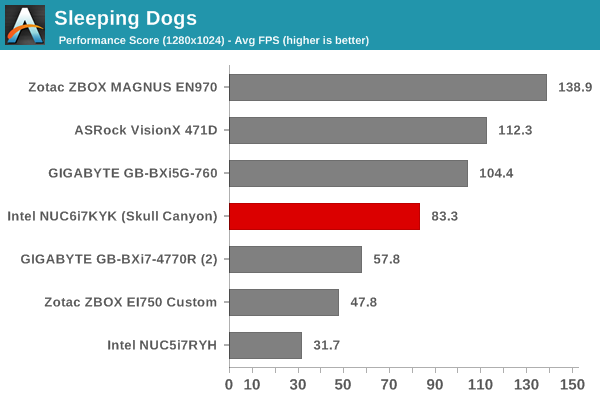
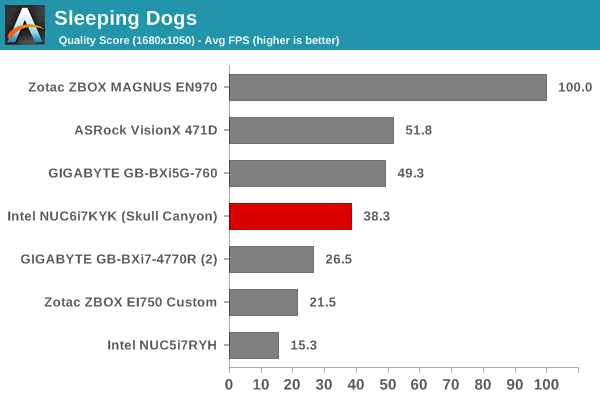
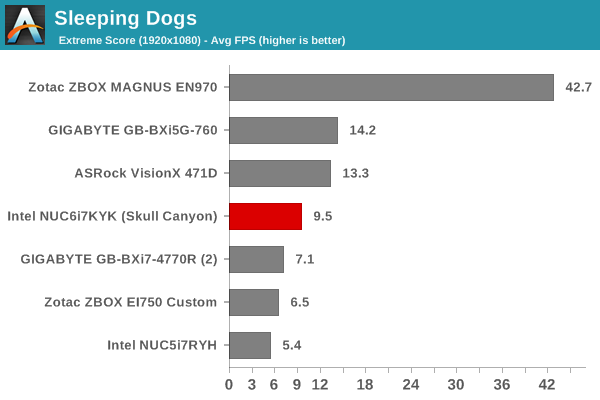
Tomb Raider

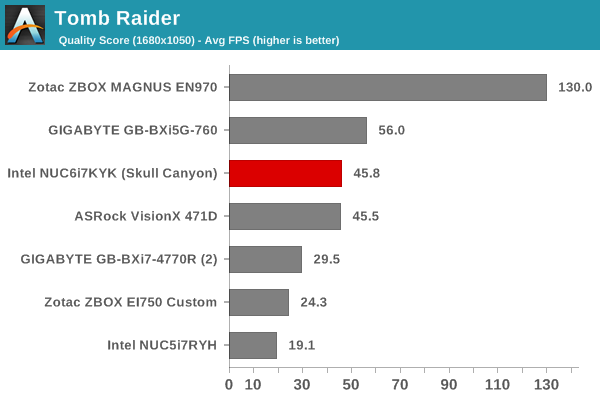
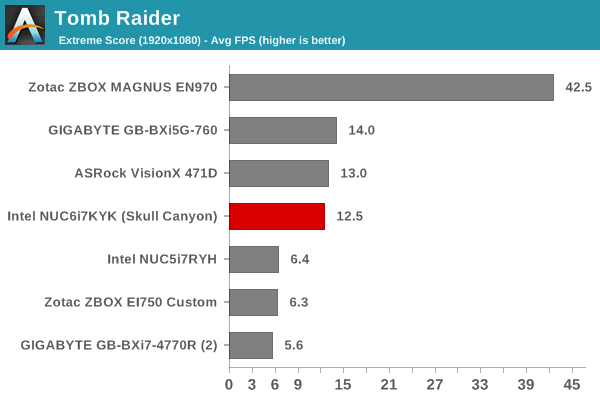
Bioshock Infinite
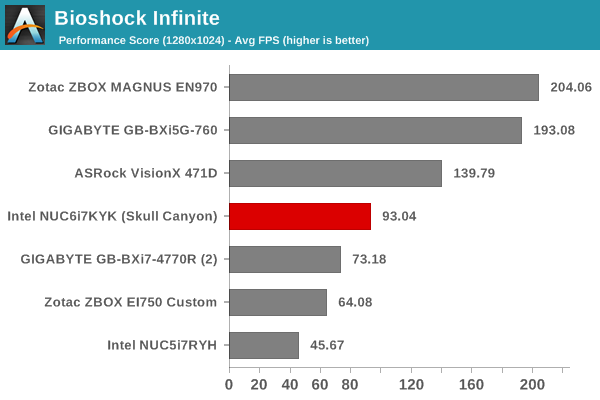
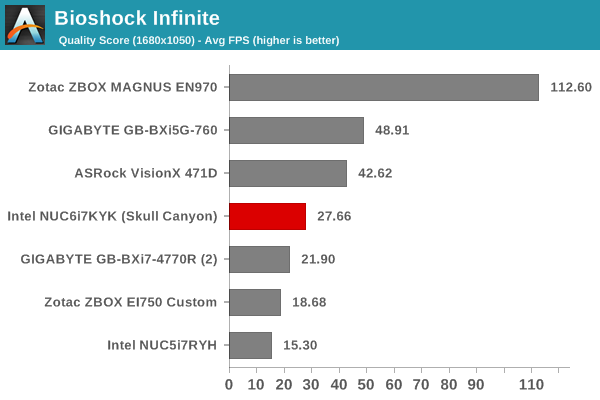

DiRT Showdown
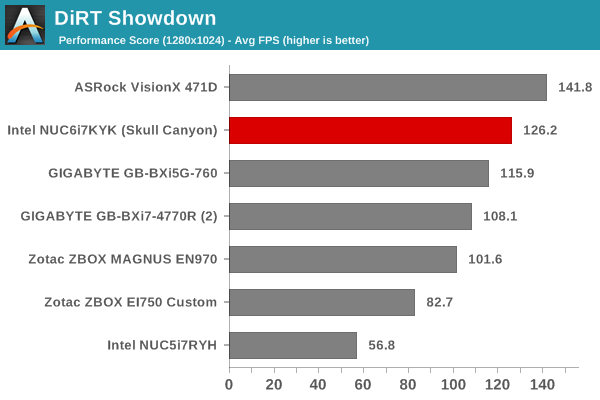
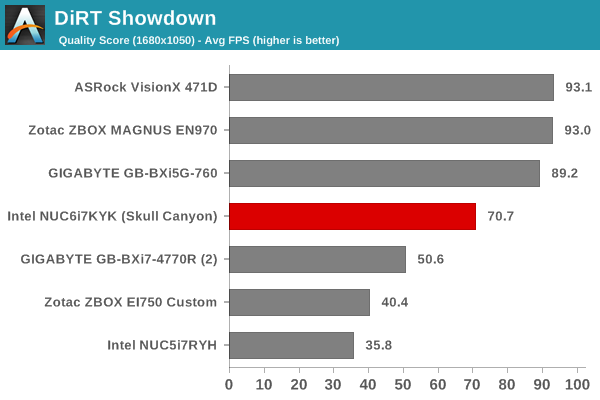
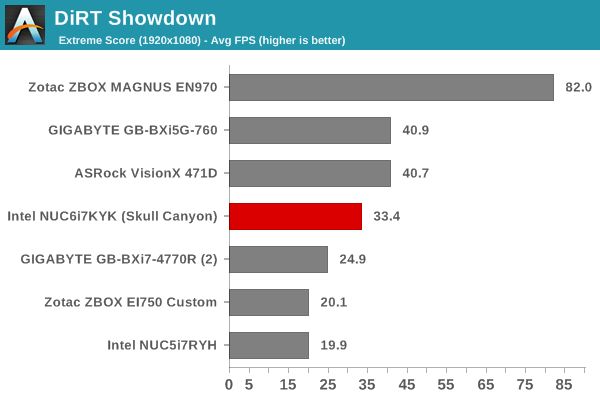
The Talos Principle
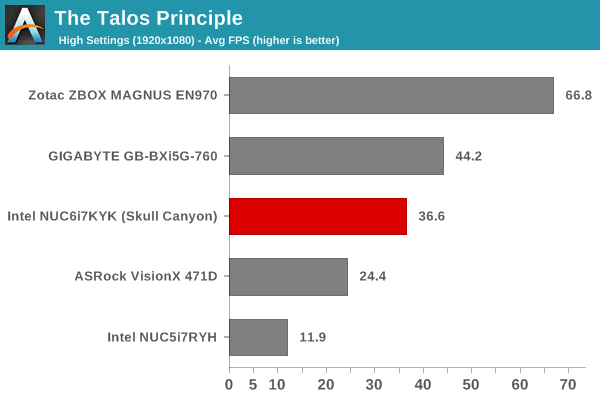
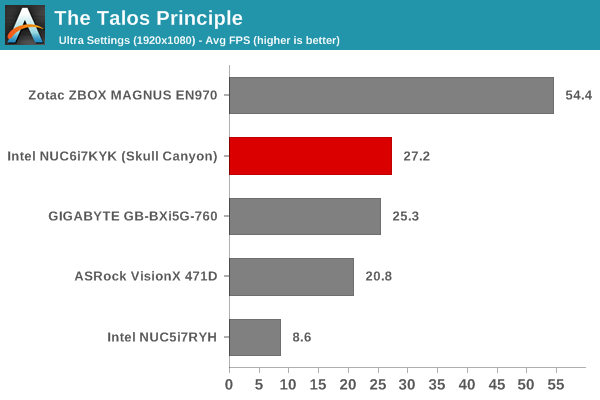
GRID Autosport
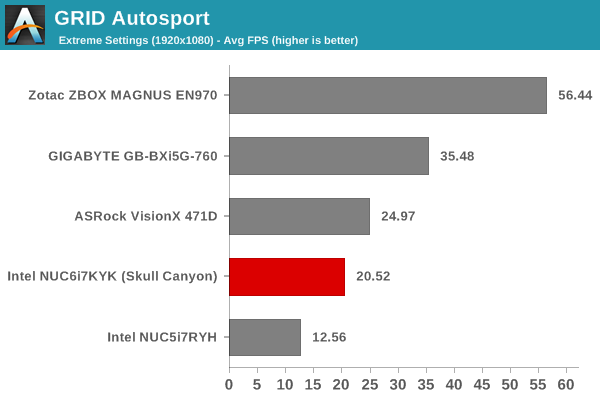
All the numbers point to expected results - Skull Canyon is simply the best when it comes to having the best iGPU for gaming purposes. However, it is a bit of a disappointment when compared to systems having slightly bigger footprints, but, equipped with previous generation discrete mobile GPUs. An external Thunderbolt GPU dock can solve some of the issues for users wanting more graphics prowess than what the Iris Pro Graphics 580 can deliver, but that has a significant price premium, and it is not something that we evaluated as part of this review.










133 Comments
View All Comments
Zero Day Virus - Monday, May 23, 2016 - link
Yep, same here! Would like to see how it compares and if it's worth it :)hubick - Monday, May 23, 2016 - link
It would also be interesting to see how the new BRIX like the GB-BSi7T-6500 stack up.Barilla - Monday, May 23, 2016 - link
I think it's time to drop the 1280x1024 gaming benchmarks. Virtually no one is going to play at such resolution, especially not with a 1000$ pc if a 22" 1080p monitor can be bought for a hundred bucks and change.MrSpadge - Monday, May 23, 2016 - link
If your GPU is slow you HAVE to game at such resolutions, no matter what monitor you have.TheinsanegamerN - Monday, May 23, 2016 - link
Then test at 720p. Nobody buys 5:4 monitors anymore.MrSpadge - Tuesday, May 24, 2016 - link
The aspect ratio does not really matter for GPU testing, it's just the number of pixels the GPU has to compute. So performance at 720p will actually be a bit better.cknobman - Monday, May 23, 2016 - link
Its rather lame that Anand would post up these low resolution benchmarks to try and make the iGPU not look like a total joke (which it is, at least at this price point).For $1000 if it can muster a playable framerate at a resolution outside of a decade old standard than this thing is overpriced.
DanNeely - Monday, May 23, 2016 - link
Lots of casual gamers do play at low resolutions because they don't have the budget to stay on the high end GPU treadmill. The real issue is that the days of doing so at 1280x1024 instead of 1366x768 are long past. This was brought up the last time gaming benchmarks were updated here; but is even more of a glaring issue as time goes on.DanNeely - Monday, May 23, 2016 - link
1680x1050 really should be replaced with 1600x900 too. 16:9 monitors have become ubiquitous; testing at narrower aspect ratios doesn't fit real world usage anymore.I could see a case for going wider at the upper end and slotting an ultrawide 3440x1440 test between conventional 2560x1440 and 3840x2180 gaming. Mostly because it looks like the 1080 still falls just short of being able to play at 4k without having to turn settings down in a lot of games; making 1440p ultra widescreen the effective max single card resolution. (An increasingly important consideration with SLI/xFire becoming progressively less relevant due to temporal AA/post processing techniques that play really badly with multi-GPU setups.)
Barilla - Monday, May 23, 2016 - link
Yeah, I guess my point was IF you want to test at low res, then test at a more relevant low res - 1280x720, 1366x768, 1600x900 etc. But my other point would be that those graphs looke like they look now cause low resolution is paired with low settings, mid resolution with mid settings and so on. Many games these days don't really slow down that much at increased resolution, but rather at increased postprocessing effects - shadows, antialiasing, DoF, you name it. Before I had my current gaming PC I used to game on a laptop with GT555M inside, which is probably weaker than this IGP by some margin, and I ran most games in 1080p at acceptable framerates by turnig the details down. In general it yielded better fps AND better looks than running non-native res and mid graphics settings.But maybe it's just me, I like pixels a lot ;)